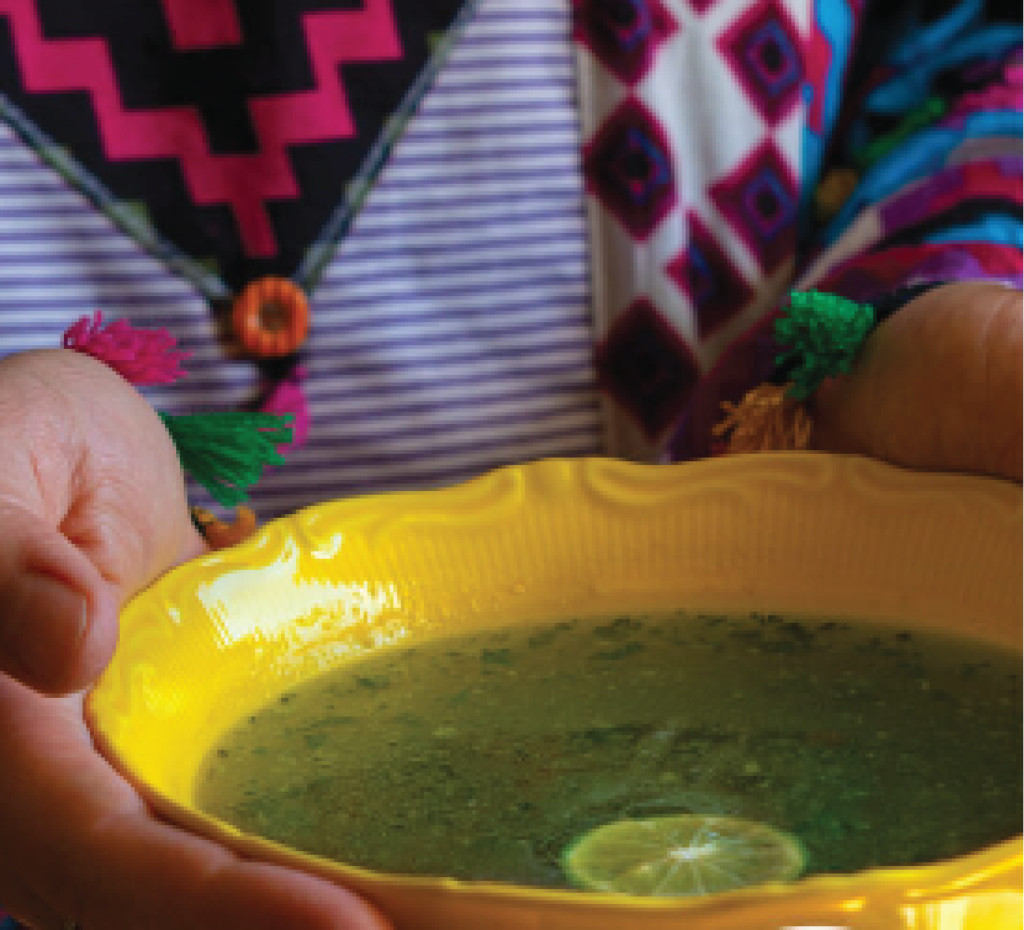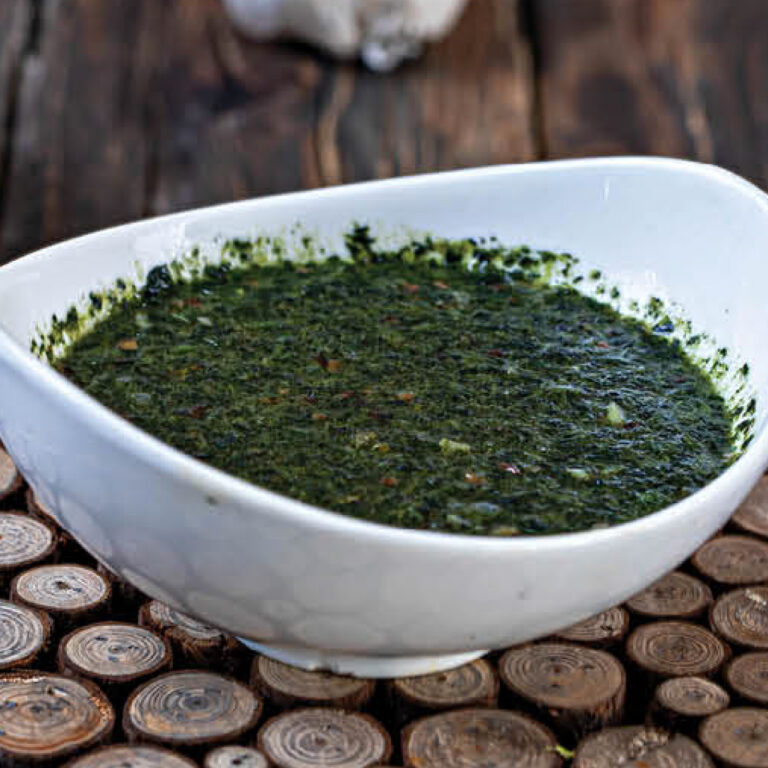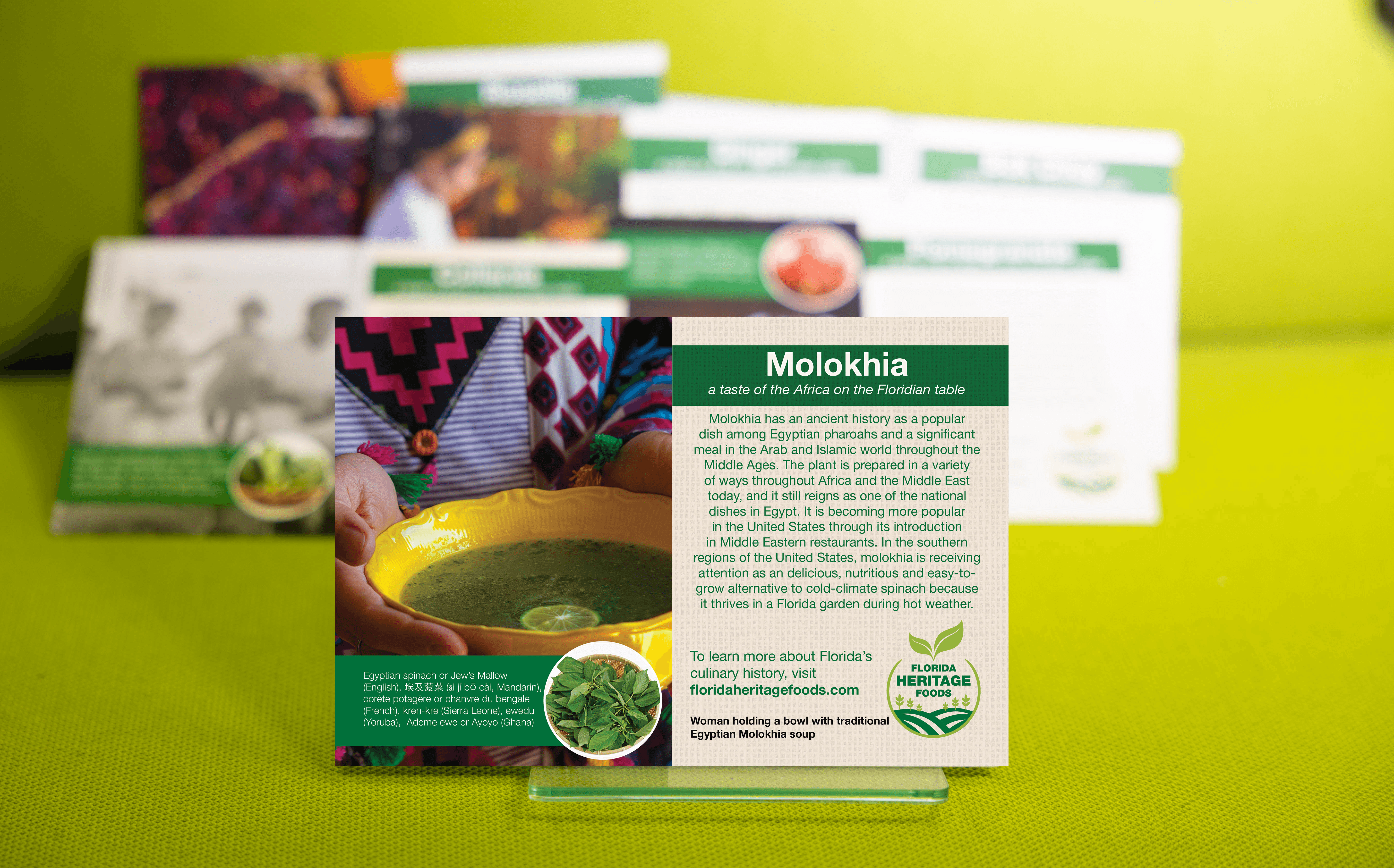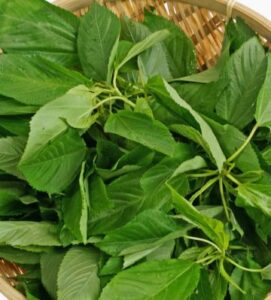Molokhia, Egyptian spinach or Jew’s Mallow (English), 埃及菠菜 (āi jíbō cài, Mandarin), corète potagère or chanvre du bengale (French), kren-kre (Sierra Leone), ewedu (Yoruba), Ademe ewe or Ayoyo (Ghana)
Corchorus olitorius

Molokhia has an ancient history as a popular dish among Egyptian pharoahs and a significant meal in the Arab and Islamic world throughout the Middle Ages. The plant is prepared in a variety of ways throughout Africa and the Middle East today, and it still reigns as one of the national dishes in Egypt. It is becoming more popular in the United States through its introduction in Middle Eastern restaurants. In the southern regions of the United States, molokhia is receiving attention as an delicious, nutritious and easy-to-grow alternative to cold-climate spinach because it thrives in a Florida garden during hot weather.

Molokhia’s history is rooted in ancient Egypt, and it was particularly important in Arab and Islamic empires since the medieval times. A recipe for molokhia is mentioned in the 14th century Arabic book Kanz al-Fawa’id fi Tanwi’ al-Mawa’id. According to the 15th century Egyptian historian al-Maqrizi, Molokhia was the favorite dish of caliph Muawiyah ibn Abi Sufyan, the founder of the Umayyad Caliphate in the 7th century. Although the plant never gained popularity in Europe, it spread to Asia and Africa through trade and the expansion of Islam. Molokhia remains an important dish in the Levant (Syria, Lebanon, Palestine, and Jordan) as well as Egypt, Cyprus, Libya, and Tunisia. More recently, it received considerable attention the the southern United States, including Florida, because it is a highly nutritious and easy-to-grow green that does well in hot weather.
Molokhia is eaten cooked rather than fresh, and preparation styles vary according to different cultural traditions. In the Levant region it is usually chopped and sautéed in oil with garlic and coriander and served as a side dish. In North Africa it is used in soups or stews. In Egypt, where it is considered one of the national dishes, the leaves are dried, chopped with a mezzaluna (curved knife), boiled in broth, and served atop rice. Molokhia is also popular throughout sub-Saharan Africa where it is prepared in a myriad of different ways. In Kenya it is boiled in salt water and served with pigeon peas. In Sierra Leone and Ghana it is served with cassava, and in Nigeria it is served with cooked yam flour. Molokhia is almost always accompanied with a protein, such as chicken, lamb or beef. In coastal regions it can be accompanied with seafood. The plant is related to okra, and like okra, it creates a mucilaginous quality that makes it ideal to thicken soups and stews. Molokhia is receiving recent attention in Florida where it is becoming more common in Middle Eastern restaurants and home gardens. It is increasingly used as a hot-climate alternative to cold climate spinach, and it works well sauteed in Greek dishes with feta and as a side green in typically southern cuisine.

Molokhia is an extremely nutrient-dense plant, containing potassium, calcium, magnesium, beta carotene, iron, and an additional 32 vitamins, minerals, and trace elements.


Plant in full sun either by direct sowing or with transplants in spring (March and April). Keep in mind that molokhia is frost sensitive, and should not go in the ground until the last frost. Harvesting leaves can take place as soon as 60 days after planting and plants will continue to yield throughout the growing season. As fall nears, the plants will ‘bolt’ to produce seeds. Seeds can be dried on the plant and saved for the next season. Molokhia plants will quickly turn into shrubs; prune as necessary for a desired shape and size.
To plan a Florida heritage garden, download the ‘Planning a Florida Heritage Garden (PDF).’

Santa Fe College Partnered with Multiple Organizations in a Collaborative Effort to Bring Awareness of the Heritage Plants In Florida.
BY CULTURAL HISTORY
BY GROWING SEASON
DROUGHT TOLERANT PLANTS
Commitment to Equal Access and Equal Opportunity
Santa Fe College is committed to an environment that embraces diversity, respects the rights of all individuals, is open and accessible, and is free of harassment and discrimination. For more information, visit sfcollege.edu/eaeo or contact equity.officer@sfcollege.edu.
SACSCOC Accreditation Statement
Santa Fe College is accredited by the Southern Association of Colleges and Schools Commission on Colleges (SACSCOC). For more information, visit sfcollege.edu/sacscoc.
